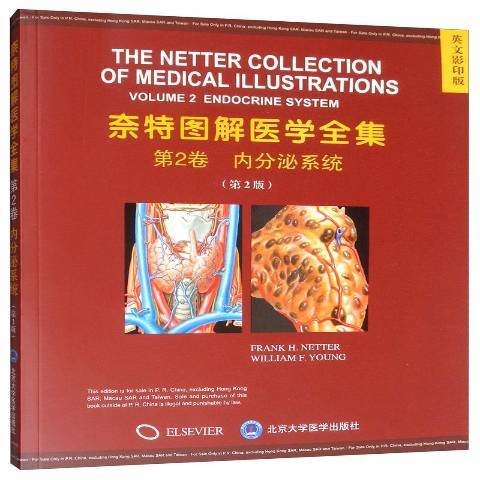內容簡介
The second edition of the Endocrine System volume of the Netter Collection is designed to provide physicians at all stages of training and practice with a visual guide to the anatomy, physiology, and pathophysiology of the endocrine glands. The first edition was published in 1965. In the intervening 5 decades, there have been remarkable developments in our understanding of endocrine disorders. The text has been entirely rewritten, but most of the anatomic and clinical artwork of Frank H. Netter, MD, has stood the test of time. Since new endocrine disorders and treatment approaches have been recognized over the past 50 years, new artwork has been added in every section, including the following: current surgical approaches to remove pituitary tumors, tests used in the diagnosis of Cushing syndrome, adrenal venous sampling for primary aldosteronism, Cushing syndrome caused by primary pigmented nodular adrenocortical disease, treatment of type 1 and type 2 diabetes mellitus, multiple endocrine neoplasia types 1 and 2, and von Hippel-Lindau syndrome. Carlos Machado, MD, James A. Perkins, MS, MFA, Kristen Wienandt Marzejon, MS, MFA, and John Craig, MD, have contributed outstanding new plates to this edition, as well as adapted and updated existing artwork. The accompanying text serves to illuminate and expand on the concepts demonstrated in the images.
The book is organized in 8 sections, which correspond to the glands and components of the endocrine system: pitLutary and hypoLhalamus, thyroid, adrenal, reproduction, pancreas, bone and calcium, lipids and nutrition, and genetics and endocrine neoplasia. In some cases, the Netter drawings are supplemented with modern diagnostic images (e.g., computed tomography and magnetic resonance imaging). The original Netter edition and the new illustrations focus on embryology, gross anatomy, histology, physiology, pathology, clinical manifestations of disease, diagnostic modalities, and surgical and therapeutic techniques.
Writing an "update" that spans 5 decades has been a daunting challenge. However, this new edition will serve to preserve and provide context for the original Netter illustrations well into the twenty-first century. This work is not a complete textbook of endocrinology, but rather it is a visual tour of the highlights of this medical discipline. I hope readers find the artwork and accompanying text useful guides as they navigate the world of endocrinology.
I gratefully acknowledge my colleagues and patients at Mayo Clinic who have provided me with the clinical experience, perspective, and insights to address the broad field of endocrinology. The editorial and production staffs at Elsevier have been very supportive at every step from initial general concepts to final publication. I am indebted to the incredible second generation of Netter artists. I also want to thank my daughter, Abbie L. Abboud, MS, CGC, ELS, for her invaluable help in medical editing and providing guidance on clarity of thought and concept. Finally, I dedicate this book to my family-their encouragement and support have been inspirational during the 2 years it took to produce the second edition of the EndoLYine System volume of the Netter Collection.

